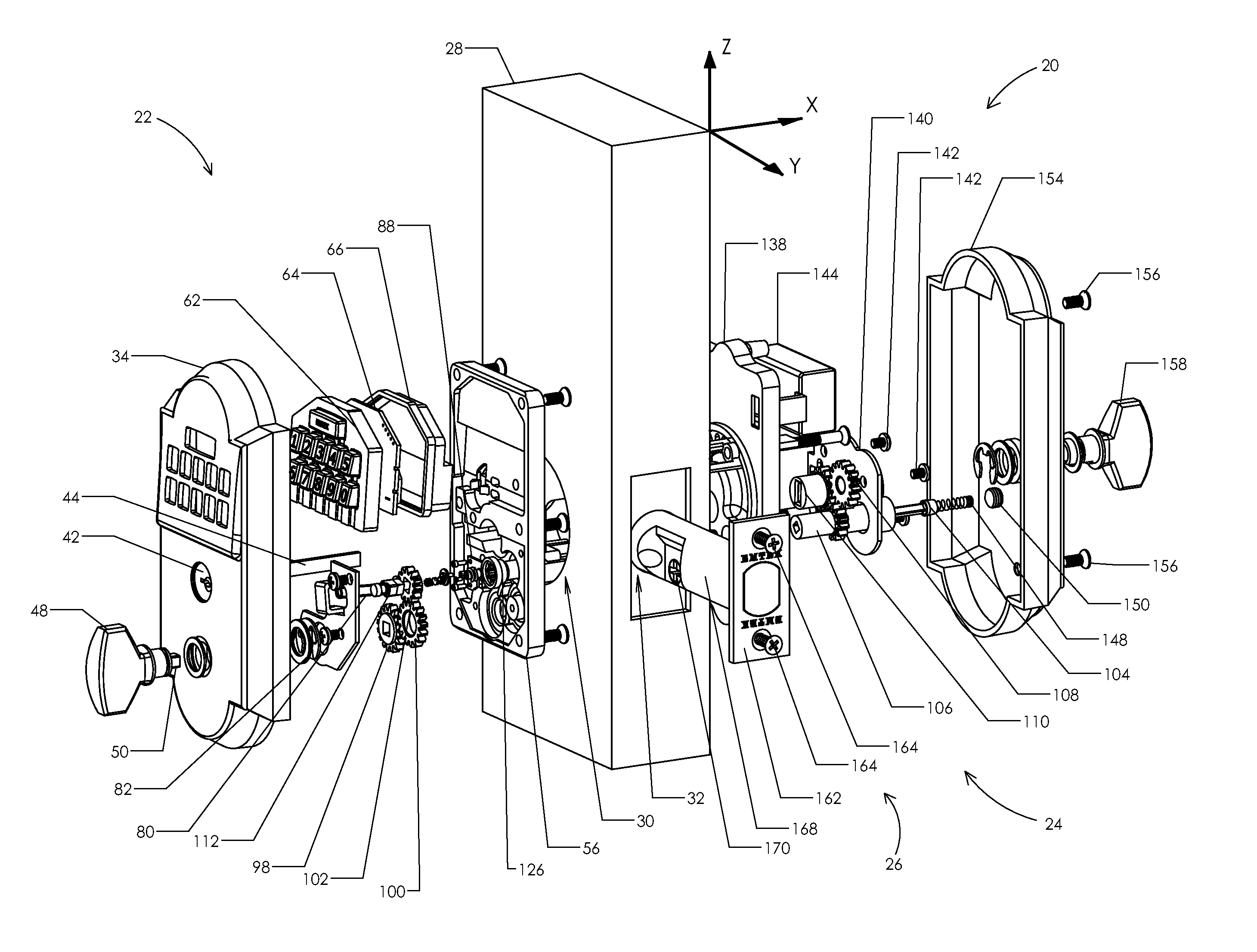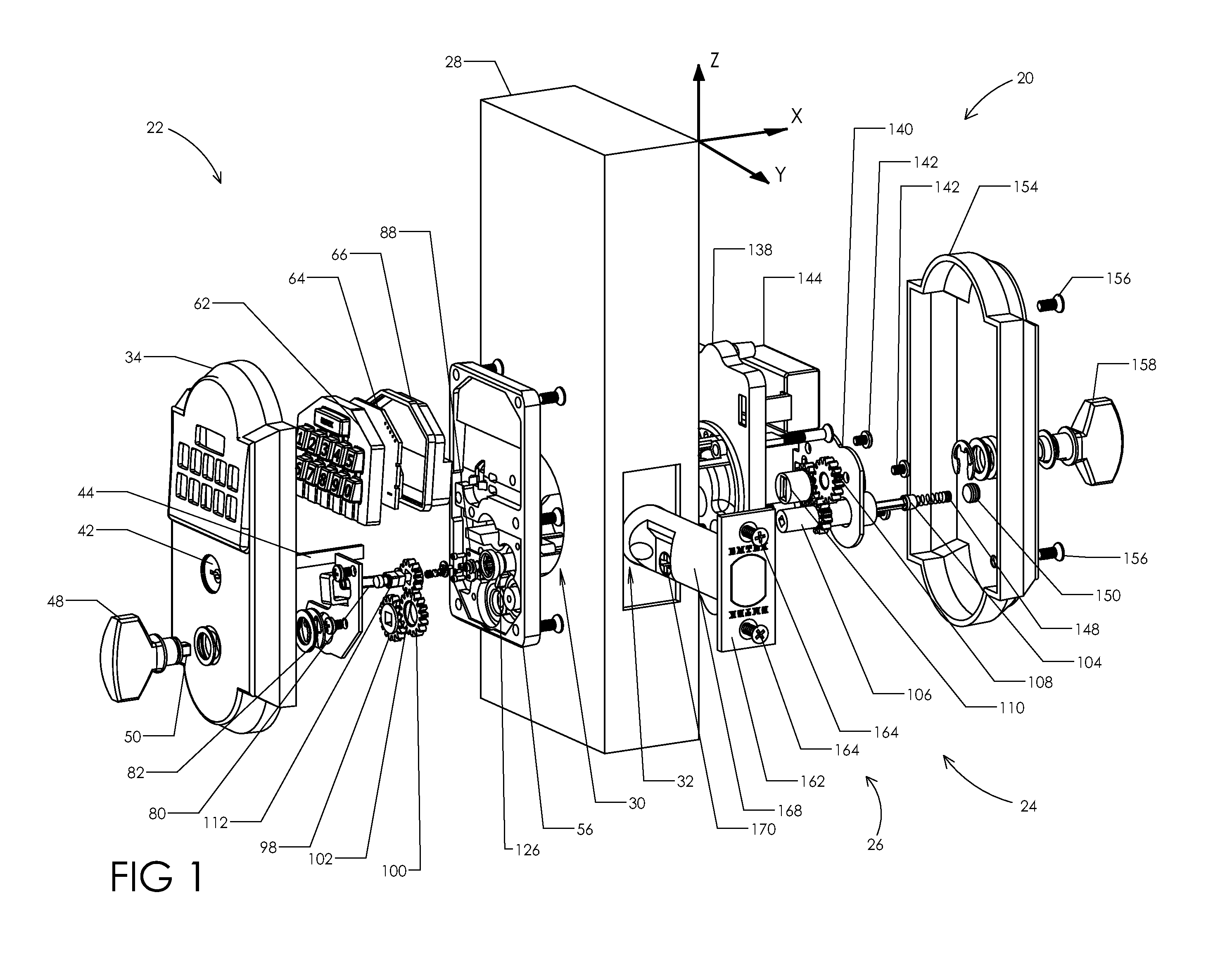Keypad lockset
a keypad lock and keypad technology, applied in the field of electronic door locks, can solve the problems of preventing customers from upgrading their traditional mechanical locks to digital keypad locks, affecting the aesthetic appeal of locks, and affecting the quality of locks, etc., to achieve accurate and reliable engagement, enhance geometry, and ensure the effect of positioning
- Summary
- Abstract
- Description
- Claims
- Application Information
AI Technical Summary
Benefits of technology
Problems solved by technology
Method used
Image
Examples
Embodiment Construction
[0055]For convenience in describing the components, sub-assemblies, the fully assembled keypad lockset embodiments and their spatial and functional relationships, each to the other, the terms vertical or height as used herein refers to the direction from the bottom to the top, or vice versa of a door as it is normally found installed in a building, that is, along the z axis as shown in various figures. The term depth refers to the direction from the outside to the inside, or vice versa of a door as it is normally found installed in a building, that is, along the x axis as shown in various figures. The term width refers to the direction from left to right, or vice versa as a person is facing a door is it is normally found installed and shut in a building, that is, along the y axis as shown in various figures. The terms exterior, outside or external refer to the side of the door on which the keypad is positioned, and the terms interior, internal, inside or inner refer to the other sid...
PUM
 Login to View More
Login to View More Abstract
Description
Claims
Application Information
 Login to View More
Login to View More - R&D
- Intellectual Property
- Life Sciences
- Materials
- Tech Scout
- Unparalleled Data Quality
- Higher Quality Content
- 60% Fewer Hallucinations
Browse by: Latest US Patents, China's latest patents, Technical Efficacy Thesaurus, Application Domain, Technology Topic, Popular Technical Reports.
© 2025 PatSnap. All rights reserved.Legal|Privacy policy|Modern Slavery Act Transparency Statement|Sitemap|About US| Contact US: help@patsnap.com



